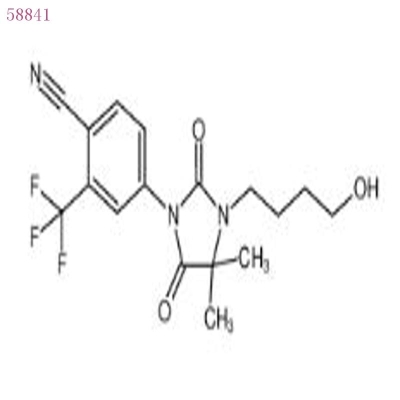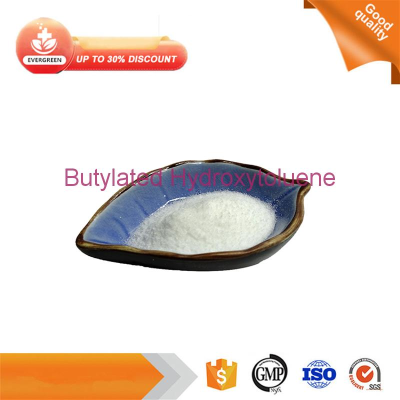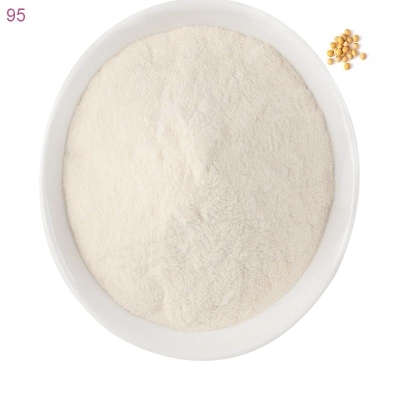-
Categories
-
Pharmaceutical Intermediates
-
Active Pharmaceutical Ingredients
-
Food Additives
- Industrial Coatings
- Agrochemicals
- Dyes and Pigments
- Surfactant
- Flavors and Fragrances
- Chemical Reagents
- Catalyst and Auxiliary
- Natural Products
- Inorganic Chemistry
-
Organic Chemistry
-
Biochemical Engineering
- Analytical Chemistry
- Cosmetic Ingredient
-
Pharmaceutical Intermediates
Promotion
ECHEMI Mall
Wholesale
Weekly Price
Exhibition
News
-
Trade Service
β-carotene is an important class of carotenoids, which is a lipophilic natural pigment that is widely found in nature and has physiological functions
such as antioxidant, anti-cancer, and immunity improvement.
However, the stability of β-carotene is poor, and it is very easy to be affected by light, high temperature, pH value and other factors during processing and storage, resulting in chemical degradation, and at the same time, because β-carotene is highly lipophilic, its solubility in aqueous solution is low, which limits its application
in food and pharmaceutical industries.
One of the effective ways to overcome these limitations is by delivering vector encapsulation β-carotene
.
In recent years, biopolymer nanoparticles have attracted attention because of their advantages of good biocompatibility, low immunogenicity, non-toxicity and biodegradability
.
The unique amino acid composition of zein makes it an amphiphilic protein with good film-forming and barrier properties, so it is widely
used in the embedded delivery of active substances and flavor substances.
Guo Jing, Sun Xiaolin and Pan Siyi* from the College of Food Science and Technology of Huazhong Agricultural University used antisolvent precipitation to prepare zein - lecithin-PGA ternary complex to achieve the embedding of β-carotene, and focused on the effects of environmental factors (temperature, pH value, light) on the stability of the β-carotene nanoparticle dispersion system, in order to provide assistance
for the further processing and long-term storage of β-carotene.
1.
Encapsulation performance of zein on β-carotene
As shown in Figure 1, when the ratio of β-carotene to zein is 1:1, zein cannot load excess β-carotene, and a large amount of β-carotene is free outside
the dispersed system.
When the mass ratio of β-carotene to zein changed from 1:1 to 1:3, the encapsulation rate increased significantly from 84.
62% to 93.
64% (P<0.
05).
<b11> The results showed that the encapsulation effect was best
when the mass ratio of β-carotene to zein was 1:3.
The encapsulation rate is high because zein can encapsulate hydrophobic β-carotene, and the addition of surfactant lecithin can form a complex with free β-carotene, thereby improving its encapsulation rate
.
2.
Analysis results of β-carotene nanoparticles
As shown in Table 1, compared with zein nanoparticles and zein gliadin-lecithin binary composite nanoparticles, the ternary complex has a higher β-carotene encapsulation rate, and the encapsulation rate can reach 93.
63%.
The particle size of zein - lecithin/β-carotene nanoparticles is 134.
1 nm, which is significantly lower than that of zein / β-carotene nanoparticles (406.
1 nm), which may be due to the fact that zein and lecithin can form compact structures at certain levels, thereby reducing the size
of the nanoparticles.
3.
Transmission electron microscopy results
.
In addition, the particle size of the nanoparticles observed from the transmission electron microscopy was significantly smaller than the sample size
measured using the nanoparticle size potentiometer.
This may be because particle sizer determines the hydrated particle size of nanoparticles, and transmission electron microscopy looks at the particle size
of the sample after water has evaporated.
4.
Solubility after freeze-drying of the dispersion system
.
Zein - lecithin - PGA / β carotene lyophilized powder has the largest absorbance and the best solubility, zein / β carotene lyophilized powder has the worst solubility, probably due to the absence of an encapsulation layer on the surface of zein resulting in its hydrophobic group exposure, and the strong hydrophobicity of zein leads to poor
redispersibility after lyophilization.
5.
The influence of temperature on the stability of the system during storage
Effect of temperature on nanoparticle size during storage
1 nm to 677.
9 nm and increased by 271 nm, ze gliadin-lecithin/ The average particle size of β-carotene nanoparticles increased from 134.
1 nm to 212.
0 nm, the average particle size of zein - lecithin-PGA/β-carotene nanoparticles increased from 113.
5 nm to 186.
3 nm, and the average particle size of zein gliadin/β-carotene nanoparticles increased significantly more than that of zein - lecithin/β carotene and zein - lecithin-PGA/β carotene nanoparticles
。
Effect of temperature on system color during storage
5 that the ΔE* values of the three nanoparticles increased with time, decreased with the increase of b* value, and increased with the increase of temperature
.
Moreover, the b* value of the dispersion system of zein - lecithin - PGA/β carotene decreased the least, indicating that the ternary complex degraded /β-carotene the least and the system was more stable
.
6.
The influence of pH value on the stability of the system
6a and b that the particle size of zein / β-carotene is large at pH 5, and the absolute potential value is low, which may be because this condition is close to the isoelectric point of zein (pH 6.
2), when the net charge of the system is small, and the protein is prone to aggregation and precipitation, resulting in a larger average particle size, which is consistent
with the previous results of Ba Chujie et al.
Zein gliadin-lecithin/β-carotene nanoparticles have a large particle size and low absolute potential at pH 5 and pH 6, but the particle size remains below
200 nm.
The particle size of zein - lecithin / β carotene nanoparticles and zein - lecithin - PGA / β carotene nanoparticles did not change much between pH 3~8, and it was preliminarily judged to have good pH stability, but the absolute potential of the two dispersed systems was low at pH 6, so the stability of long-term storage under this pH value condition needed to be further investigated
。 It can be seen from Figure 6c that the color change law of the three embedding systems is basically consistent with the change law of average particle size and zeta potential, and the yellow value of zein / β-carotene decreases significantly at pH 5, which may be due to the low net charge of the system near the isoelectric point, resulting in protein precipitation and degradation of β-carotene
.
At pH 3~5, β-carotene is prone to isomerization degradation due to the acidic environment of the system, resulting in a decrease
in B* value.
7.
The influence of light on the stability of the system
7a and b, after 4 h of UV irradiation, the particle size of the three embedding systems increased slightly, and the PDI of the zein β dispersion system increased significantly, while the PDI of zein - lecithin/β-carotene and zein gliadin-lecithin-PGA/β-carotene dispersion system increased
slightly.
This may be because when only zein is used to embed β-carotene, it is difficult to form steric hindrance because there is no coating layer on the surface of zein and molecular recombination is more likely to occur after ultraviolet irradiation
.
At the same time, in the absence of lecithin and PGA as stabilizers and active agents, the hydrophobic group of zein is exposed, and the nanoparticles are easily aggregated and precipitated under the action of hydrophobicity, resulting in a large
average particle size and PDI.
The presence of PGA can further protect β-carotene from ultraviolet radiation and cause degradation, and the particle size of the zein - lecithin - PGA / β carotene dispersion system is small and the PDI is small
before and after UV irradiation 。 It can be seen from Fig.
7c that with the increase of ultraviolet irradiation time, the b* values of the three embedding systems gradually decreased, indicating that all three were affected by light, and the yellow value of zein - lecithin / β carotene dispersion system decreased the most, and the yellow value of zein / β-carotene and zein - lecithin - PGA / β-carotene dispersion system decreased not much
differently.
This is because the aromatic groups and double bonds in the zeat gliadin molecule have ultraviolet absorption capacity, which can protect β-carotene
to a certain extent.
The reason for the poor protection effect of zein - lecithin / β-carotene dispersion system may be because lecithin is prone to rancidity under ultraviolet irradiation, more sensitive to ultraviolet rays, and affects the stability
of the dispersion system.
Conclusion
The optimal encapsulation rate of zein - lecithin-PGA nanoparticles was prepared, and the effect of mass ratio of β-carotene to zein on its encapsulation rate was studied, and the optimal encapsulation rate of zein - lecithin-PGA nanoparticles was (93.63±0.
14)%, the average particle size was (113.
53±1.
3) nm, and the zeta potential was (-27.
47±0.
87) mV
。 The stability of zein / β-carotene nanoparticles, zein - lecithin / β carotene and zein - lecithin - PGA / β carotene nanoparticles under temperature, time, pH value and ultraviolet light were also explored, and the zein gliacin-lecithin-PGA/β-carotene nanoparticles had good physicochemical properties after 7 days of storage at 37 °C and 4 h after ultraviolet lamp irradiation, and the average particle size was below 250 nm.
PDI is less than 0.
2, and the lyophilized nanoparticles have good resolubility and redispersibility
.
These results suggest that zein gliadin-lecithin-PGA composite nanoparticles can serve as an effective delivery system to improve the physical stability
of β-carotene.
About the corresponding author
Pan Siyi, professor of Huazhong Agricultural University, is currently a member of the Academic Degrees Committee of the State Council; Director of the Postharvest Treatment and Processing Research Office of the National Citrus Industry Technology System, post scientist
.
cross-century academic backbone of ordinary colleges and universities in Hubei Province; Hubei Province New Century High-level Talents; Invited expert of the Fourth Advisory Committee of the People's Government of Hubei Province; Member of the Expert Group in the Technical Field of Hubei Science and Technology Development Plan; Standing Director of Fruit and Vegetable Processing Technology Branch of Chinese Society of Food Science and Technology; Standing Director of the Agricultural Products Storage and Processing Branch of the Chinese Agricultural Society; Standing Director of the Agricultural Products Storage and Processing Branch of the Chinese Society of Agricultural Engineering; Member of
the Technical Committee of Hubei Export Agricultural Products Safety and Health Monitoring Center.
About the first author
Guo Jing is a graduate student of Huazhong Agricultural University, specializing in food chemistry
.
"Effect of Environmental Factors on the Stability of β-Carotene Composite Nanoparticles" is from Food Science, Vol.
43, No.
16, pp.
90-97, 2022, authors: Guo Jing, Sun Xiaolin, Pan Siyi
.
DOI:10.
7506/spkx1002-6630-20211007-046
。 Click to view information about
the article.







